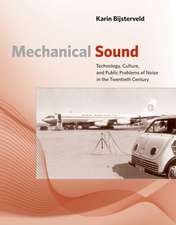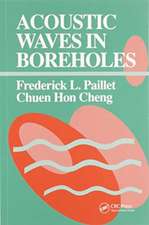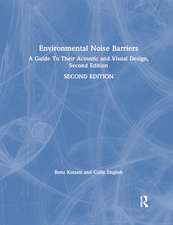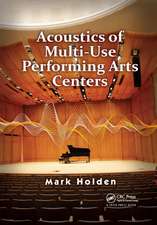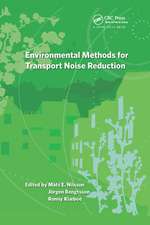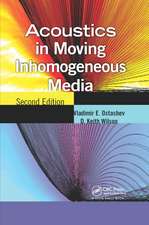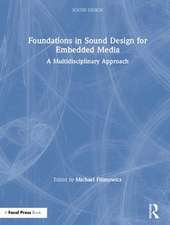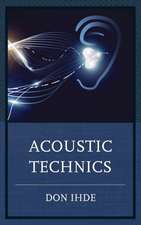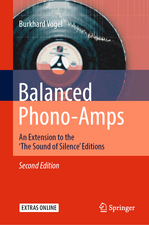Sonic Skills: Listening for Knowledge in Science, Medicine and Engineering (1920s-Present)
Autor Karin Bijstervelden Limba Engleză Hardback – 10 oct 2018
It is common for us today to associate the practice of science primarily with the act of seeing—with staring at computer screens, analyzing graphs, and presenting images. We may notice that physicians use stethoscopes to listen for disease, that biologists tune into sound recordings to understand birds, or that engineers have created Geiger tellers warning us for radiation through sound. But in the sciences overall, we think, seeing is believing. This open access book explains why, indeed, listening for knowledge plays an ambiguous, if fascinating, role in the sciences. For what purposes have scientists, engineers and physicians listened to the objects of their interest? How did they listen exactly? And why has listening often been contested as a legitimate form of access to scientific knowledge? This concise monograph combines historical and ethnographic evidence about the practices of listening on shop floors, in laboratories, field stations, hospitals, and conference halls, between the 1920s and today. It shows how scientists have used sonic skills—skills required for making, recording, storing, retrieving, and listening to sound—in ensembles: sets of instruments and techniques for particular situations of knowledge making. Yet rather than pleading for the emancipation of hearing at the expense of seeing, this essay investigates when, how, and under which conditions the ear has contributed to science dynamics, either in tandem with or without the eye.
| Toate formatele și edițiile | Preț | Express |
|---|---|---|
| Paperback (1) | 215.50 lei 6-8 săpt. | |
| Palgrave Macmillan UK – 9 dec 2019 | 215.50 lei 6-8 săpt. | |
| Hardback (1) | 221.82 lei 6-8 săpt. | |
| Palgrave Macmillan UK – 10 oct 2018 | 221.82 lei 6-8 săpt. |
Preț: 221.82 lei
Nou
Puncte Express: 333
Preț estimativ în valută:
42.44€ • 44.32$ • 35.13£
42.44€ • 44.32$ • 35.13£
Carte tipărită la comandă
Livrare economică 05-19 aprilie
Preluare comenzi: 021 569.72.76
Specificații
ISBN-13: 9781137598318
ISBN-10: 113759831X
Pagini: 174
Ilustrații: IX, 174 p.
Dimensiuni: 148 x 210 mm
Greutate: 0.38 kg
Ediția:1st ed. 2019
Editura: Palgrave Macmillan UK
Colecția Palgrave Macmillan
Locul publicării:London, United Kingdom
ISBN-10: 113759831X
Pagini: 174
Ilustrații: IX, 174 p.
Dimensiuni: 148 x 210 mm
Greutate: 0.38 kg
Ediția:1st ed. 2019
Editura: Palgrave Macmillan UK
Colecția Palgrave Macmillan
Locul publicării:London, United Kingdom
Cuprins
Acknowledgements.- 1. Listening for Knowledge: Introduction.- 2. Sonic Signs: Turning to, Talking about and Transcribing Sound.- 3. Modes of Listening: Why, How and to What?.- 4. Resounding Contestation: The Ambiguous Status of Sonic Skills.- 5. Popping Up: The Continual Return of Sound and Listening.- 6. Ensembles of Sonic Skills: Conclusions.- References.
Notă biografică
Karin Bijsterveld is historian and professor of Science, Technology and Modern Culture at Maastricht University. She is author of Mechanical Sound: Technology, Culture, and Public Problems of Noise in the Twentieth Century (2008), co-editor of the Oxford Handbook of Sound Studies (2012) and co-editor of Sound Souvenirs: Audio Technologies, Memory and Cultural Practices (2009). Three recent publications are the edited volume Soundscapes of the Urban Past: Staged Sound as Mediated Cultural Heritage (2013), the monograph Sound and Safe: A History of Listening Behind the Wheel (2014), and a special issue on Auditory History guest edited for The Public Historian (2015).
Textul de pe ultima copertă
It is common for us today to associate the practice of science primarily with the act of seeing—with staring at computer screens, analyzing graphs, and presenting images. We may notice that physicians use stethoscopes to listen for disease, that biologists tune into sound recordings to understand birds, or that engineers have created Geiger tellers warning us for radiation through sound. But in the sciences overall, we think, seeing is believing. This open access book explains why, indeed, listening for knowledge plays an ambiguous, if fascinating, role in the sciences. For what purposes have scientists, engineers and physicians listened to the objects of their interest? How did they listen exactly? And why has listening often been contested as a legitimate form of access to scientific knowledge? This concise monograph combines historical and ethnographic evidence about the practices of listening on shop floors, in laboratories, field stations, hospitals, and conference halls, between the 1920s and today. It shows how scientists have used sonic skills—skills required for making, recording, storing, retrieving, and listening to sound—in ensembles: sets of instruments and techniques for particular situations of knowledge making. Yet rather than pleading for the emancipation of hearing at the expense of seeing, this essay investigates when, how, and under which conditions the ear has contributed to science dynamics, either in tandem with or without the eye.
Karin Bijsterveld is historian and professor of Science, Technology and Modern Culture at Maastricht University, The Netherlands.
Karin Bijsterveld is historian and professor of Science, Technology and Modern Culture at Maastricht University, The Netherlands.
Caracteristici
Shows how scientists have used sonic skills in knowledge making.
Explains why listening for knowledge plays an ambiguous, if fascinating, role in the sciences.
Combines historical and ethnographic evidence about the practices of listening on shop floors, in laboratories, field stations, hospitals, and conference halls throughout the twentieth century.
Explains why listening for knowledge plays an ambiguous, if fascinating, role in the sciences.
Combines historical and ethnographic evidence about the practices of listening on shop floors, in laboratories, field stations, hospitals, and conference halls throughout the twentieth century.



